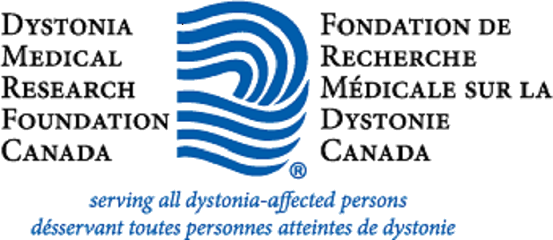
Caring for a loved one with dystonia can be both a rewarding and challenging experience. The demands of caregiving can be physically and emotionally taxing, making it essential to find ways to prevent burnout. As the number of caregivers continues to grow each year, more people are
adjusting their priorities to support loved ones facing chronic illnesses.
Natalie Hellmers, PhD, RN, ACNP-BC, from Weill Cornell Medicine in New York City, shared four pillars of preventing caregiver burnout during a DMRF webinar, The Caregiver Journey (www.youtube.com/watch?v=uI0czh7OPd4), presented earlier this year. As a nurse practitioner at the Weill
Cornell Parkinson’s Disease & Movement Disorders Institute, Dr. Hellmers provides clinical evaluations and treatments for patients with movement disorders, including dystonia, and conducted a medical literature review and survey research to further examine the caregiver experience.
To ensure caregivers don’t neglect their own well-being, here are some strategies Dr. Hellmers recommends to help caregivers stay healthy while delivering the best care possible.
- Get to Know the Care Team
Dystonia often requires a multidisciplinary approach, involving neurologists, physical therapists, and other specialists. Knowing the team allows the caregiver to coordinate care more efficiently and creates a network of support for the caregiver and patient. Being familiar with
the medical team allows you to ask the right questions, seek second opinions if needed, and ensure that the care provided is in the best interest of your loved one.
“If you can go as a caregiver to the (doctor’s) visit if the person you’re supporting will allow you to join them…you can also be there for that conversation,” said Dr. Hellmers. “It is my hope that as the time goes on, the caregiver becomes not just a person sitting in the corner of the exam room but rather a person who’s part of the dialogue.”- Seek Out Resources
Physical therapists and social workers can be important members of the treatment team for persons with dystonia and their caregivers. Dr. Hellmers noted that a case-by-case assessment may be necessary to make sure that the patient’s needs are being met.
“We know that when there are muscle spasms, muscle contractions or pain, it does have to be dealt with very carefully,” said Dr. Hellmers. “Although there are many physical therapists out there, not everyone is well versed in neurological conditions, so I would emphasize that a
person really spends time making sure that the relationship with the physical therapist is good.”- Consider Respite Care
Caregivers can seek respite care for their loved ones by exploring various resources available within their community. Respite care provides temporary relief from caregiving duties, allowing caregivers to rest and recharge. Start by contacting local healthcare providers, such as hospitals, clinics, or social workers, who can recommend respite care programs or facilities that specialize in caring for individuals with dystonia or other chronic conditions. Community centers, senior services, and religious organizations may also offer respite care services or connect you with volunteers who provide in-home assistance. Additionally, many non-profit organizations and government programs provide
directories and funding options to help caregivers access affordable respite care. By taking advantage of these resources, caregivers can ensure their loved ones receive quality care while they take the necessary time to tend to their own well-being.It’s easy to neglect your own needs when you’re focused on caring for someone else, but self-care is essential. Make time for activities that rejuvenate you, whether it’s a short walk, reading a book, or enjoying a hobby. Regular exercise, a balanced diet, and sufficient sleep are also key to maintaining your energy levels and emotional balance. Making time for doctor’s appointments for caregivers is also a form of self-care that is often overlooked. Integrating routines that allows care for both patient and caregiver is instrumental to sustaining everyone’s health.
As Dr. Hellmers explained, “There is a lot of literature about the concept that the person who has a condition, the state of their health will also correlate with the state of health of the person who’s taking care of them, meaning that when one person does better the other person does better.”
Caregiving for a loved one with dystonia is a significant responsibility that requires physical, emotional, and mental strength. By prioritizing self-care, seeking support, and adopting strategies to manage stress, you can reduce the risk of burnout and continue to provide compassionate care. Remember, taking care of yourself is not a luxury—it’s a necessity that enables you to be the best caregiver possible.
- Stress Reduction: Practicing Self-Care
The holidays can bring additional stress to our lives; stress that is not healthy for anyone but particularly unhelpful for those managing dystonia. Learning and mastering relaxation techniques can help you take care of yourself and manage stress—anytime of the year.
Relaxation techniques are practices that help bring about the body’s “relaxation response,” which is characterized by slower breathing, lower blood pressure, and a reduced heart rate. Most relaxation techniques can be self-taught and self-administered. They require only brief instruction before they can be done without assistance.
Listed below are some of the different types of relaxation techniques suggested by the National Institutes of Health:
- Progressive Relaxation: Also called progressive muscle relaxation, this technique involves tensing different muscles in your body and then releasing the tension.
- Autogenic Training: Through a series of mental exercises involving relaxation and ideas you suggest to yourself (autosuggestion), your mind focuses on your body’s experience of relaxation.
- Guided Imagery or “Visualization”: In guided imagery, you picture objects, scenes, or events that are associated with relaxation or calmness and attempt to produce a similar feeling in your body.
- Biofeedback-Assisted Relaxation: Through feedback that is usually provided by an electronic device, you learn how to recognize and manage how your body responds. The electronic device lets you see how your heart rate, blood pressure, or muscle tension changes in response to feeling stressed or relaxed.
- Self-Hypnosis: In self-hypnosis programs, people learn to produce the relaxation response when prompted by a phrase or nonverbal cue (called a “suggestion”) of their own.
- Breathing Exercises: For breathing exercises, you might focus on taking slow, deep breaths —also called diaphragmatic breathing.
- 5 Things to Know About Relaxation Techniques for Stress
When you’re under stress, your body reacts by releasing hormones that produce the “fight-or-flight” response. Your heart rate and breathing rate go up and blood vessels narrow (restricting the flow of blood). Occasional stress is a normal coping mechanism. But over the long-term, stress may contribute to or worsen a range of health problems including digestive disorders, headaches, sleep disorders, and other symptoms.
In contrast to the stress response, the relaxation response slows the heart rate, lowers blood pressure, and decreases oxygen consumption and levels of stress hormones. In theory, voluntarily creating the relaxation response through regular use of relaxation techniques could counteract the negative effects of stress.
- Relaxation techniques are generally safe, but there is limited evidence of usefulness for specific health conditions. Research is under way to find out more about relaxation and health outcomes.
- Relaxation techniques include a number of practices such as progressive relaxation, guided imagery, biofeedback, self-hypnosis, and deep breathing exercises. The goal is similar in all: to consciously produce the body’s natural relaxation response, characterized by slower breathing, lower blood pressure, and a feeling of calm and well-being.
- Relaxation techniques often combine breathing and focused attention to calm the mind and the body. These techniques may be most effective when practiced regularly and combined with good nutrition, regular exercise, and a strong social support system.
- Most relaxation techniques can be self-taught and self-administered. Most methods require only brief instruction from a book or experienced practitioner before they can be done without assistance.
- Do not use relaxation techniques as a replacement for conventional care or to postpone seeing a doctor about a medical problem. Talk to your health care providers if you are considering using a relaxation technique for a particular health condition. This will help ensure coordinated and safe care.
Adapted from: Relaxation Techniques: What You Need to Know.
Source: nccih.nih.gov/health/relaxation-techniques-what-you-need-to-know
5 Things to Know About Relaxation Techniques for Stress.
Source: nccih.nih.gov/health/tips/things-to-know-about-relaxation-techniques-for-stress?nav=govd_
Adapted and reprinted with permission from DMRF Dystonia Dialogue, Winter 2024 Vol 47, No 3.
